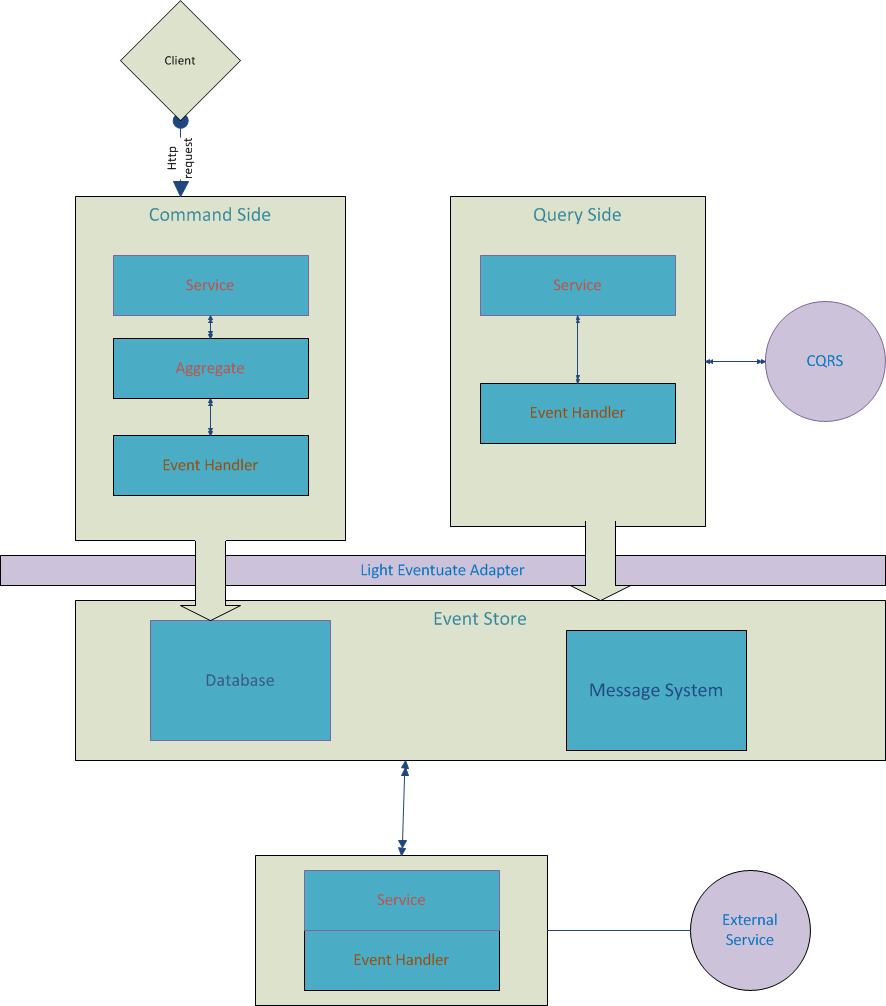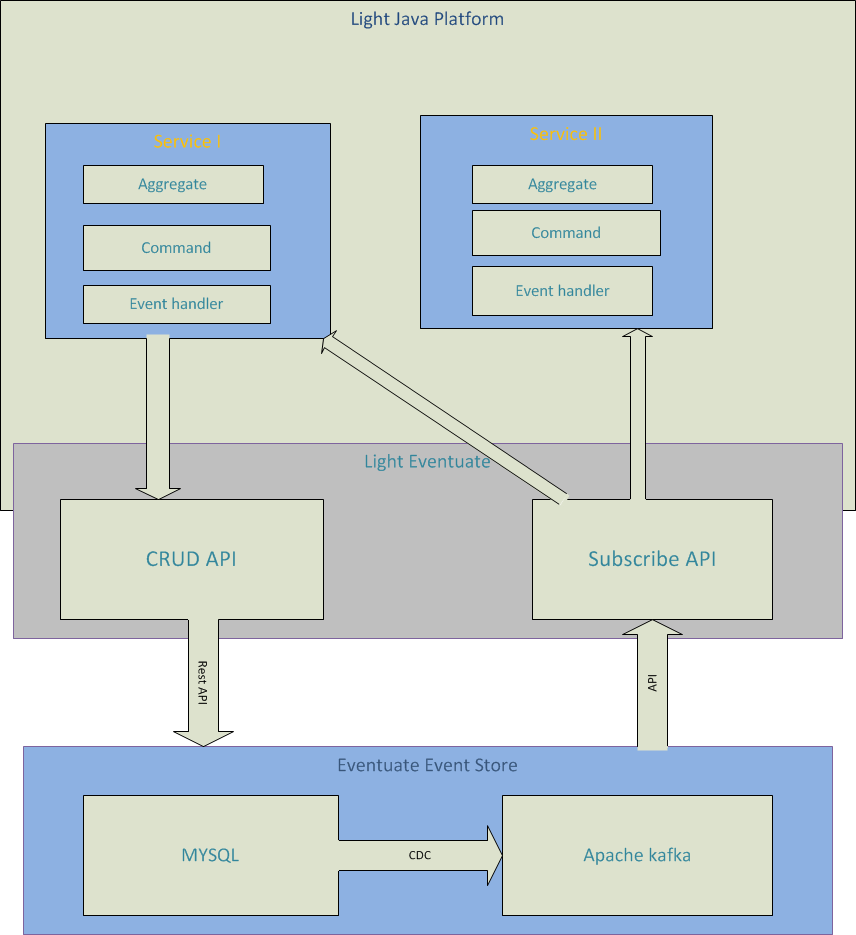Event Driven Architecture
An Eventuate application consists of four types of modules, each with different roles and responsibilities:
- Command-side module
- Query-side view updater module
- Query-side view query module
- Outbound gateway module
Note that this is the logical architecture of the application. The modules can either be deployed together as a monolithic application or separately as standalone microservices.
Command-side modules
The command-side of an Eventuate application consists of one or more command-side modules. A command-side module creates and updates aggregates in response to external update requests (for example, HTTP POST, PUT, and DELETE requests) and events published by command-side aggregates. A command-side module consists of following components:
Aggregates - Implement most of the business logic and are persisted using event sourcing
Services - Process external requests by creating, updating and deleting aggregates
Event handlers - Process events by creating, updating and deleting aggregates
Query-side modules
The query-side of an Eventuate application maintains one or more materialized (CQRS) views of command-side aggregates. Each view has two modules:
View updater module - Subscribes to events and updates the view
View query module - Handles query (for example, HTTP GET) requests by querying the view
Outbound gateway modules
An outbound gateway module processes events by invoking external services.
Diagram:

Light-4j based eventuate architecture
In an event-driven architecture, a service publishes events when something notable happens, such as when it updates a business object. Other services subscribe to those events. In response to an event a service typically updates its own state. It might also publish more events, which then get consumed by other services
